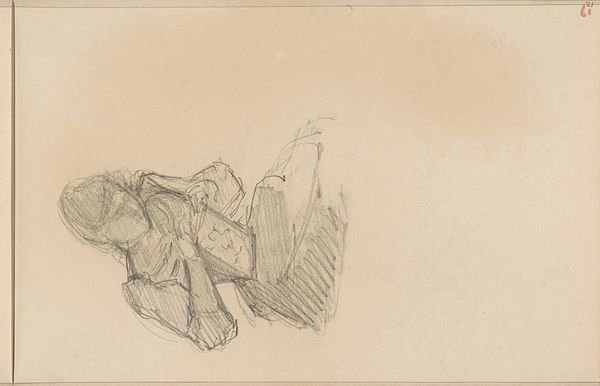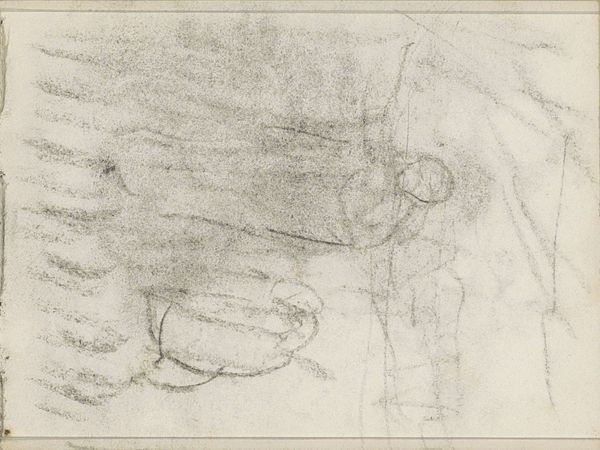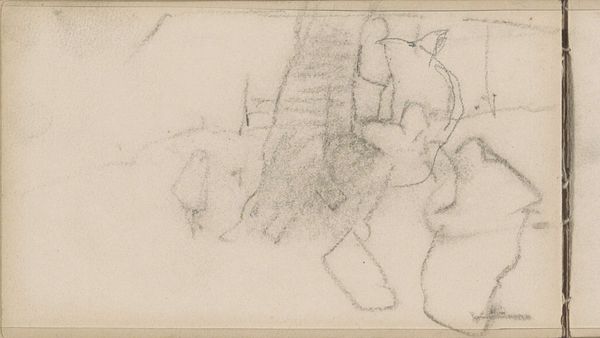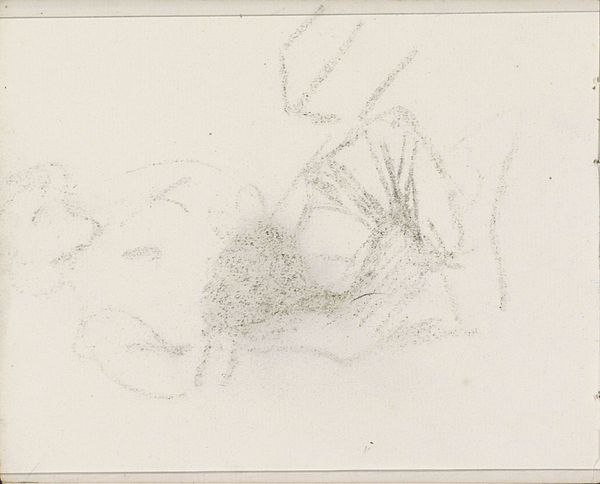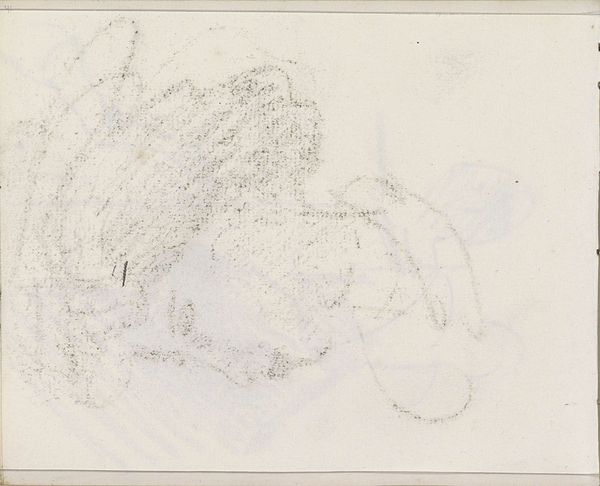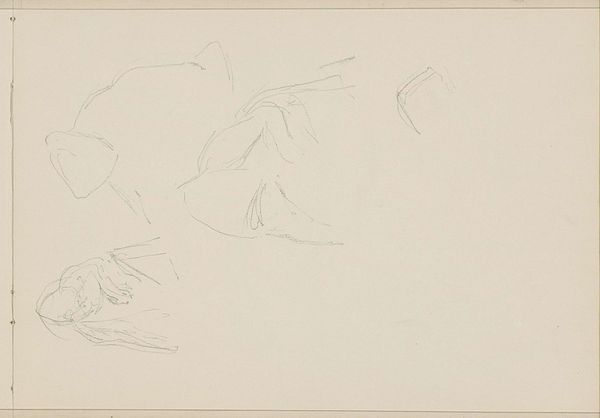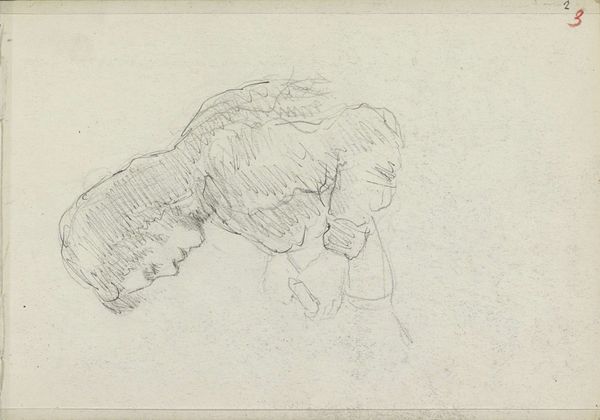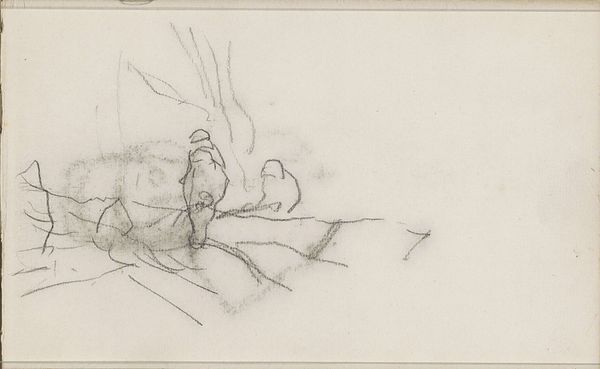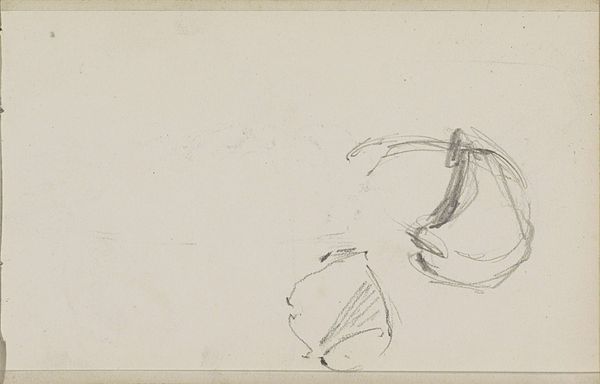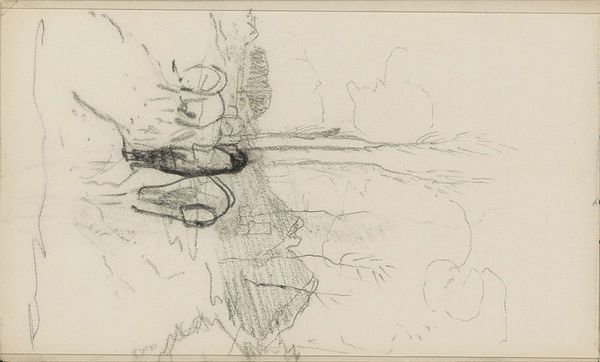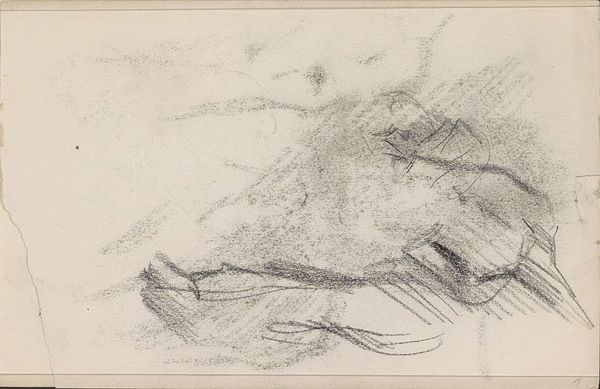
Copyright: Rijks Museum: Open Domain
Editor: So, this is "Head of an Old Woman with a Cap" by Anton Mauve, made sometime between 1848 and 1888. It’s a pencil drawing, currently at the Rijksmuseum. The sketchiness gives it a sense of vulnerability, I think, but what catches your eye? Curator: What immediately strikes me is the cap itself. It's not just a covering; it speaks volumes about societal position and the psychological state of women in that era. The cap could be seen as a symbol of domesticity, a signifier of age, and perhaps even a marker of social standing within her community. Editor: I hadn’t really considered that! So, the cap becomes more than just a cap. Curator: Precisely! Think about how head coverings have functioned throughout history. They conceal, they reveal, they protect, and they denote. Consider the visual language: Is it ornate, suggesting prosperity, or plain, hinting at a life of modesty and labour? And the angle – the tilt of the head - coupled with the rudimentary, unembellished medium tells a story of fleeting contemplation and possibly, constraint. What feelings arise when you consider those implications? Editor: It makes me consider the limitations placed on women, particularly older women, during that time. It is thought-provoking that this simple cap has the potential to represent so much, telling us something important about the period in which it was made. Curator: Indeed, the symbols may alter, and their connotations are prone to change with the times, but the psychological essence persists through culture, memory, and experience. Editor: That's such an insightful point. I'll definitely look at portraits with new eyes now, especially thinking about how seemingly simple details carry a lot of weight. Curator: Absolutely. Symbols can be incredibly powerful and enduring, even in something as subtle as a drawing like this.
Comments
No comments
Be the first to comment and join the conversation on the ultimate creative platform.
